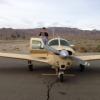trim noses up during bumpy flight
-
Members Online
- 1980Mooney
- Mikey30V
- bencpeters
- LANCECASPER
- Jon W
- NickG
- TGreen
- wburger1
- Blaze
- alextstone
- exM20K
- FJC
- TravelingIA98
- flyingcheesehead
- 303mooney
- IvanP
- Skyland
- Robert C.
- Oscar Avalle
- Danb
- kaba
- Meshach
- hammdo
- N201MKTurbo
- dzeleski
- TCC
- BillyT0020
- PeteMc
- Echo
- Stealth Mooney
- c1tice
- M20S Driver
- DXB
- varlajo
- Fly Boomer
- tcal780
- Gary Bymers
- Fast Yellow Fellow
- Scottknoll
- PT20J
- finnicky7
- Jetdriver
- mluvara
- Schllc


Recommended Posts
Join the conversation
You can post now and register later. If you have an account, sign in now to post with your account.